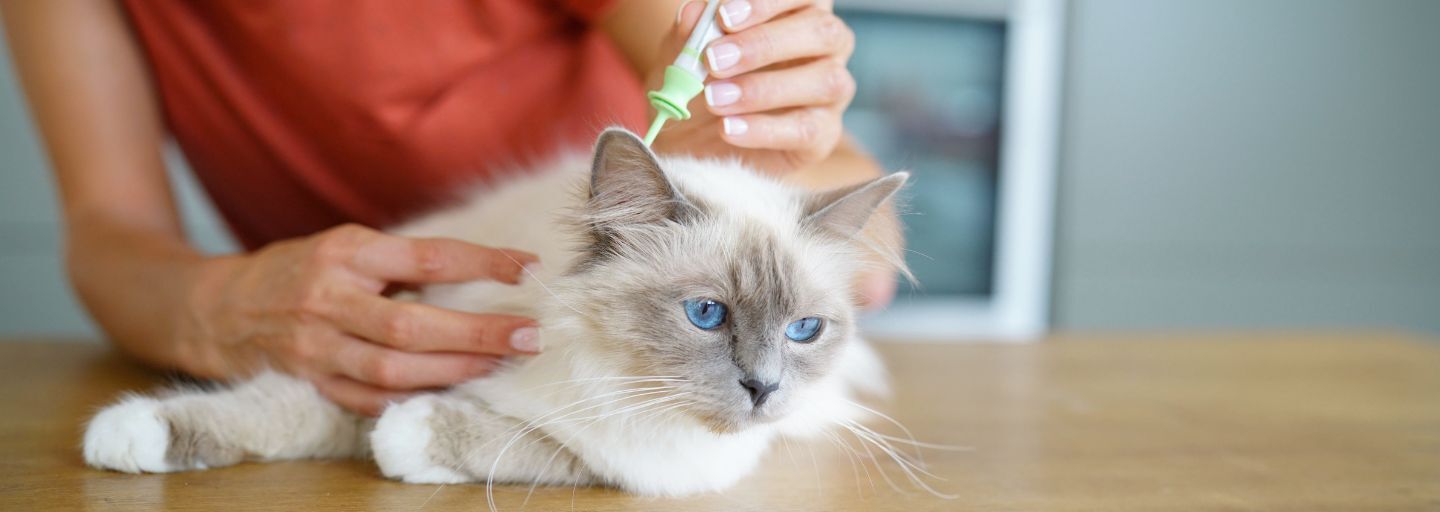Flea control for cats is one of the most important issues for any cat owner to consider. These parasites feed on the blood of your pet and can transmit a number of serious diseases. Flea bites can create allergies, transmit tapeworms, and can even cause life-threatening conditions such as hemolytic anemia.
Get rid of your cat’s parasites - they may even affect you!
Ignoring fleas on cats not only compromises your pet’s health but also yours and your family’s! Fleas and ticks not only bite cats and dogs but also commonly bite humans, and can transmit serious diseases like bartonella. You may see a red spot or localized itchy rash at the bite site.
For every living flea on your cat or kitten, there could be hundreds more developing in your home. Typically, adult fleas are only about 5% of the total population. The larvae and unhatched eggs of these parasites make up the remaining 95%. They may infest carpeting, bedding, and other furniture in your home and pose a serious pest problem for months to come.
All About Fleas
What are fleas?
Fleas are the most common external parasites affecting both cats and dogs in Australia. Adult fleas can live for 7 to 14 days and nourish themselves from the blood of your pet, sometimes drinking up to 15 times their own weight.
Female fleas lay 40 to 50 eggs every day, which fall off your pet and can quickly infest your home. These eggs hatch into tiny larvae that seek out dark, humid places like carpets and upholstery. The larvae then cocoon themselves into pupae and can remain in a dormant state for many months. When they sense warmth and vibration, they emerge and jump onto your cat to start the life cycle again.
How do I spot fleas?
The most obvious sign of fleas on your pet is persistent scratching, especially at the tail, head, neck, or belly areas where fleas often congregate. Excessive scratching can also lead to bald spots, or you may notice scabs or red, sore areas on your cat’s skin if they develop a flea allergy.
If you comb your cat, you may also be able to spot adult fleas on their fur. These are dark brown and about 1 mm to 2 mm long. You may also see tiny black specks of flea dirt. When looking for fleas in this way, use a fine-toothed flea control comb, such as the Purina Total Care Flea Control Comb, for the task.
How can I prevent fleas?
You can prevent fleas by using an effective flea treatment for cats. These are available over the counter, or you can speak to your vet to find a suitable option. Flea treatments are especially necessary in the warmest months, where flea activity is highest.
In conjunction with the above, your cat’s environment should also be treated regularly. Vacuuming and steaming the carpets, cleaning and washing all the bedding, and using carpet sprays are some options to help prevent these parasites from multiplying in your house.
Even if your cat is indoors only, you still need to be vigilant about flea prevention. Fleas often hitch a ride on intermediary carriers, so anything or anyone can unknowingly bring fleas into your home. A second-hand pet toy, a visiting friend with an infected pet, or upcycled furniture all have the potential to bring dormant flea pupae infestations with them. Fleas will also often enter your home on their own or may even be born in your home itself.
What flea treatments are available?
There are a number of effective treatments that can help your cat become flea-free.
The simplest method of treating your cat’s fleas is a spot-on treatment such as PURINA TOTAL CARE Flea Control, which comes in a small pipette that is applied to the back of your cat’s neck. The liquid spreads over the body surface, killing fleas before they can lay new eggs.
You can also find flea tablets for cats, such as PURINA TOTAL CARE Flea Knockdown, which are administered orally. These tablets are fast-acting and eliminate the fleas in your cats within several hours, allowing your pet to be flea-free.
Always follow the manufacturer's instructions when using any anti-flea product and never use a dog product as these may be toxic to cats.
When using flea tablets and treatments, it’s important to remove fleas from your cat’s environment, as otherwise, they may quickly be reinfected. Flea eggs can survive for long periods in carpets and cracks between the floorboards, so you will need to make sure to treat your house.
Use a household flea spray recommended by your vet at least once a year. If you suffer an infestation, use your vacuum cleaner to bring the eggs and immature fleas in your carpets and upholstery to the surface. Kill the fleas with a household spray so they stop hooking onto the carpet, and then re-vacuum. When you’re finished, spray the vacuum cleaner with flea spray and throw away any vacuum bags. If you don't spray the vacuum cleaner, you run the risk of redistributing the same flea eggs back onto the carpet through the exhaust of the vacuum the next time you use it.





